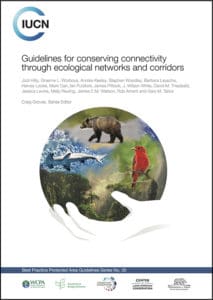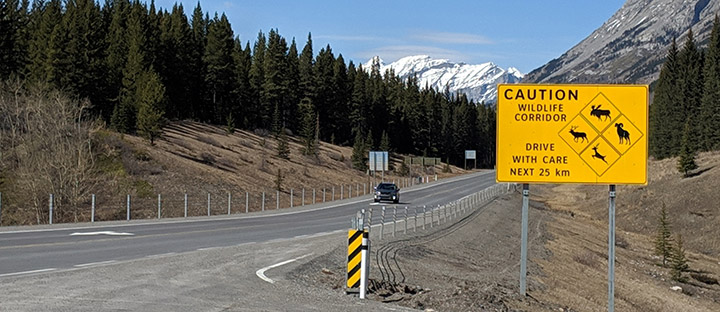Global guidelines published today by the International Union of Conservation of Nature show ecological connectivity can enhance protected areas, conserve biodiversity, and increase resilience to climate change and should be included in conservation planning. The guidelines also show keeping connectivity is an important tool in preventing further biodiversity loss around the world — including Canada.

Published July 7, the first-ever Guidelines for Conserving Connectivity through Ecological Networks and Corridors and science behind them shows that interconnected protected areas and other areas for biological diversity conservation are much more effective than disconnected areas in human-dominated systems, especially in the face of climate change. Ecological connectivity is the unimpeded movement of species and flow of natural processes that sustain life on Earth.
As Canada advances on its commitments to the Convention of Biological Diversity, it has set forth an explicit way forward to advance biodiversity conservation through Pathway to Canada Target 1. These goals clearly reiterate the need for connected protected areas, referring to achieving goals through conserving networks of protected areas.
Defining, measuring, and conserving connectivity has been a nebulous goal globally and in Canada. These new guidelines define ecological corridors as ways to identify, maintain, enhance and restore connectivity, and recommend means to formalize ecological corridors and networks.
“As we cope with the impacts of climate change, it is absolutely necessary that the world moves toward a coherent global approach for ecological connectivity conservation, and begins to measure and monitor the effectiveness of efforts to protect connectivity and thereby achieve functional ecological networks,” says Gary Tabor, Chair of the IUCN World Commission on Protected Areas Connectivity Conservation Specialist Group.
The document also highlights case studies around the world, recommending places the designation of ecological corridors to knit together protected and conserved areas to form ecological networks for conservation.
One such case is in Canada: a 3,400 kilometer long corridor known as Yellowstone to Yukon. This vision is for an ecological network made of protected and conserved areas as well as connected areas in between. To be successful, this vision requires science, on-the-ground action, and monitoring the impact of the collaborative conservation efforts in order to assess whether connectivity goals are ultimately met.
Another example highlighted in the report is eastern U.S. and Canada’s Staying Connected Initiative in the Northern Appalachian/Acadian region.
“These corridors are important because they help progress us toward a shared goal of healthy, connected ecosystems that allow species to feed and breed as well as support natural processes that sustain life on Earth,” says lead author and Deputy Chair of the IUCN WCPA Connectivity Conservation Specialist Group, Jodi Hilty.
“To effectively conserve biodiversity we need to advance conservation at the scale that nature needs, and that means conserving ecological networks. These guidelines help society plan for a more connected future.”
The main objective of these guidelines is to provide a concrete and tangible plan agreed upon by experts around the world through a global consultation process to advance stronger connectivity conservation.
Additional reading and resources:
Read the guidelines now: Guidelines for Conserving Connectivity Through Ecological Networks and Corridors.
Review the joint media release from IUCN World Commission on Protected Areas Connectivity Conservation Specialist Group, Center for Large Landscape Conservation, Yellowstone to Yukon Conservation Initiative, and IUCN World Commission on Protected Areas Beyond the Aichi Targets Task Force.


